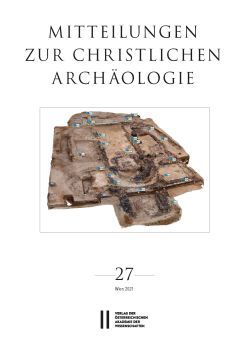
Mitteilungen zur Christlichen Archäologie 27, pp. 59-70, 2021/11/04
The article deals with a so far unknown gold-glass (inv.-no. 26/7), which the two authors came across during their work in the Collection of Classical Antiquities of the Institute of Classical Archaeology and Byzantine Archaeology at the Ruprecht Karl University of Heidelberg. The painted decoration shows a golden Christogram on a red background, which is enclosed by two differently structured frames. Based on its manufacturing technique and the material used for its production, as well as the iconography and style of its decoration, the gold-glass in Heidelberg can be identified not only as a modern forgery, but also fits into an already known group of forged sandwich gold-glasses.
Keywords: gold-glass, Heidelberg, Christogram, forgery